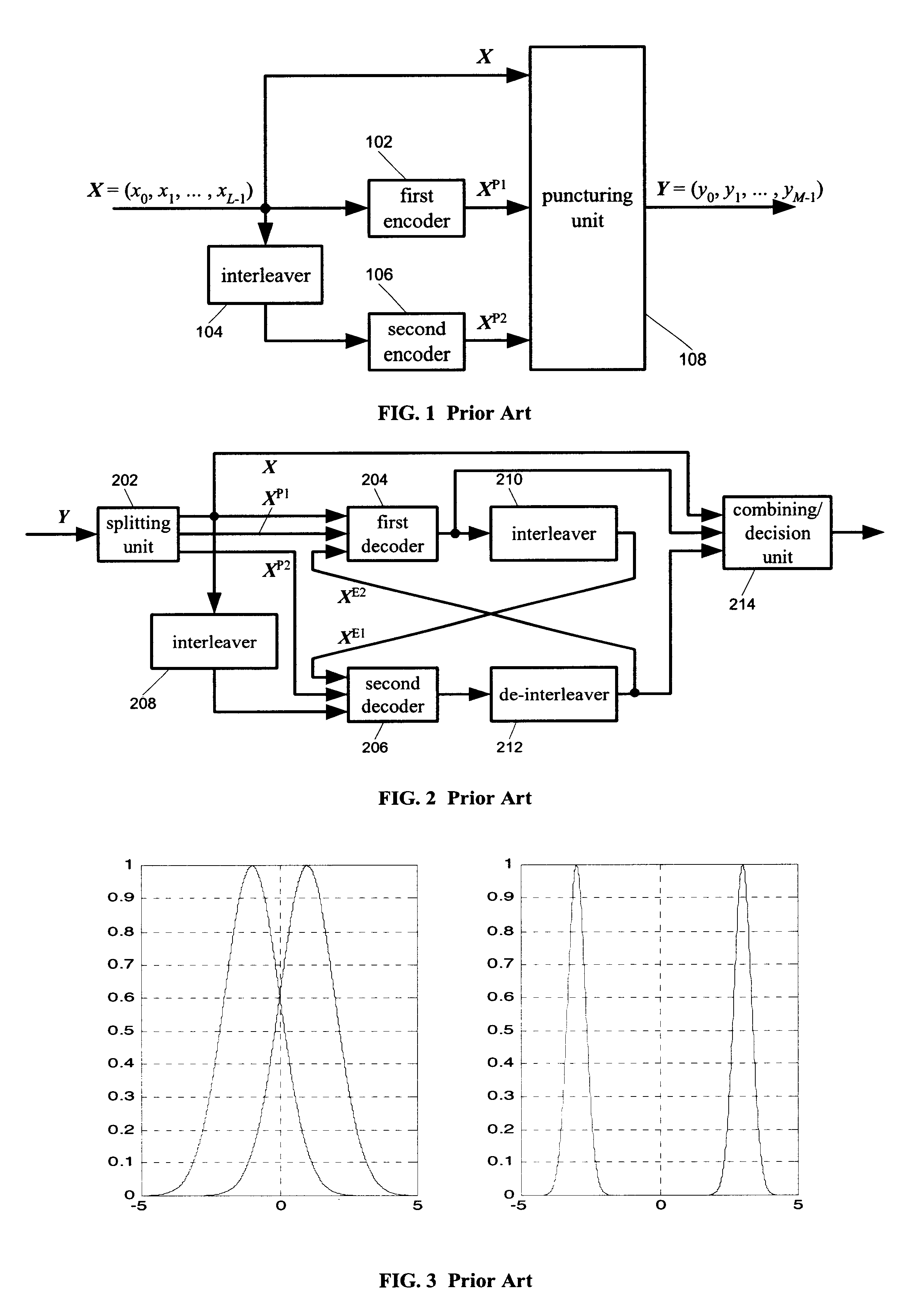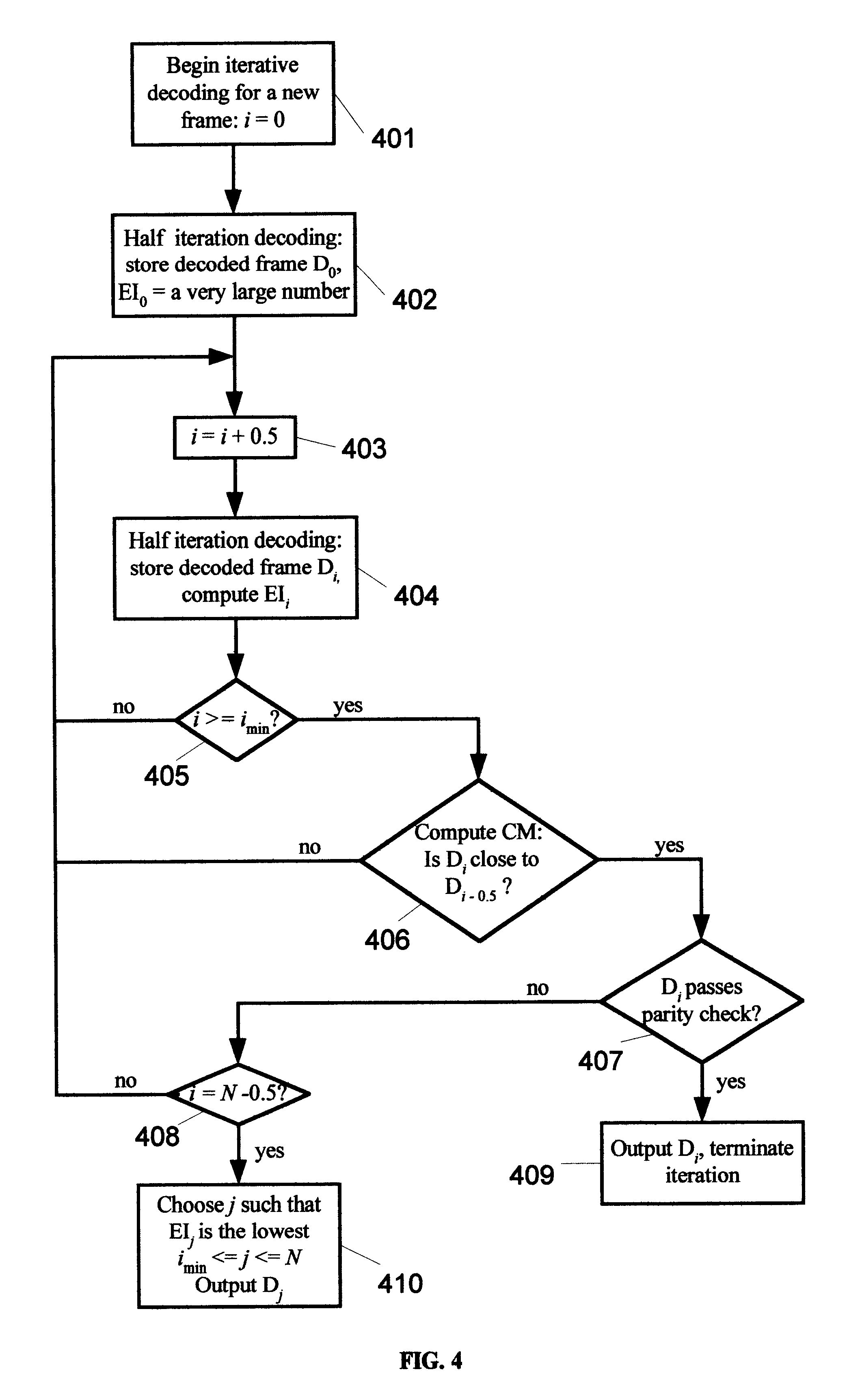Hybrid early-termination methods and output selection procedure for iterative turbo decoders
a turbo decoder and early termination technology, applied in the direction of coding, code conversion, electrical equipment, etc., can solve the problem that all decoded frames fail the correctness test, and achieve the effect of accurate determination of the correctness of a decoded frame, minimal system overhead, and reliable termination of the iteration process
- Summary
- Abstract
- Description
- Claims
- Application Information
AI Technical Summary
Benefits of technology
Problems solved by technology
Method used
Image
Examples
Embodiment Construction
The present application combines the output-comparison-based method and the CRC-based method to form a hybrid early-termination method that is extremely reliable and effective. In the comparison process, the present application compares the decoded frames between half iterations to further reduce the computational load. Referring to FIG. 2, one half iteration is defined to be a complete decoding operation by either first decoder 204 or second decoder 206. The present application also uses error-detection codes (EDC) to provide a more general framework that includes CRC as a special case. Best error-detection codes can often be found outside the class of CRC codes, especially when the code length (frame size) is small.
In accordance with embodiments of the present invention, an iterative decoder decodes an encoded frame that includes parity-check information, and terminates the iteration when either (a) the maximum number of iterations N has been reached, or (b) the decoded frames fro...
PUM
 Login to View More
Login to View More Abstract
Description
Claims
Application Information
 Login to View More
Login to View More - R&D
- Intellectual Property
- Life Sciences
- Materials
- Tech Scout
- Unparalleled Data Quality
- Higher Quality Content
- 60% Fewer Hallucinations
Browse by: Latest US Patents, China's latest patents, Technical Efficacy Thesaurus, Application Domain, Technology Topic, Popular Technical Reports.
© 2025 PatSnap. All rights reserved.Legal|Privacy policy|Modern Slavery Act Transparency Statement|Sitemap|About US| Contact US: help@patsnap.com



